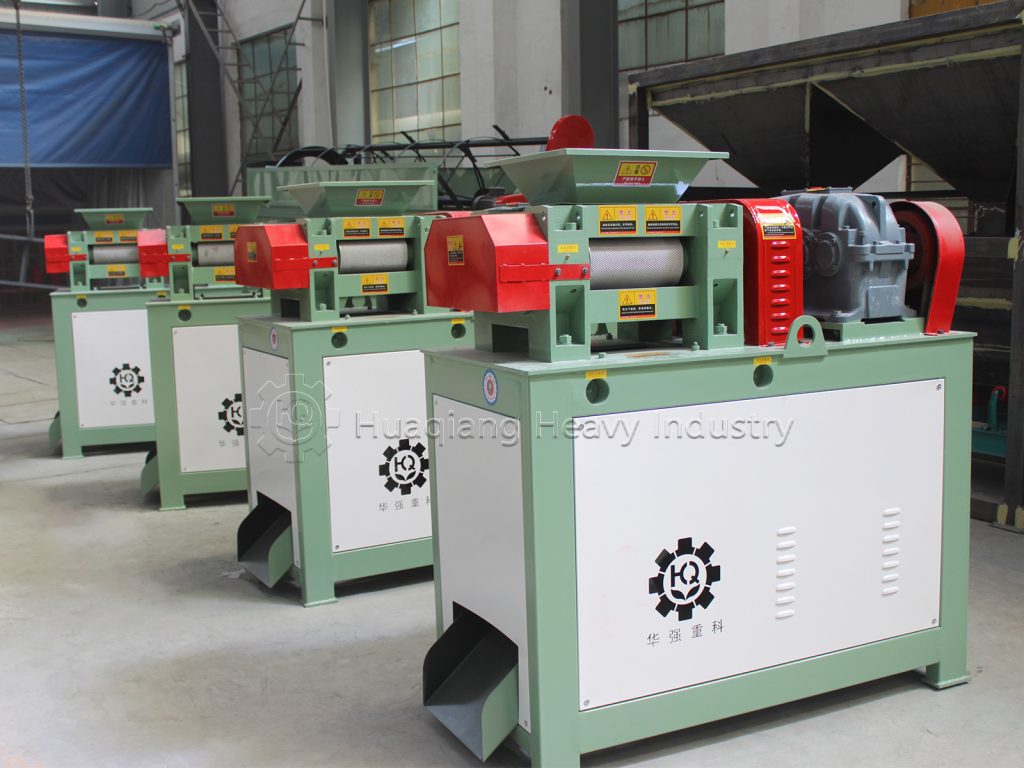In the granulation process of an organic fertilizer production line, the double roller press granulator, due to its high efficiency and environmentally friendly features, is a core piece of equipment. It uses the principle of physical extrusion to transform loose organic fertilizer raw materials into uniform granules, meeting the needs of fertilizer storage, transportation, and application. Its operation process can be divided into three stages: raw material pretreatment, extrusion molding, and granulation.

Raw material pretreatment is the foundation of granulation. Fermented and crushed organic fertilizer raw materials first enter the batching system, where they are mixed with auxiliary materials in a controlled ratio to achieve a moisture content of 20%-30% and a particle size uniformity of over 80%. The raw materials are then conveyed to the feed inlet of the double-roller extrusion granulator, where they are pushed at a constant speed between two counter-rotating extrusion rollers by a screw feeder. The feeder speed can be adjusted according to the raw material characteristics to ensure a stable feed rate and avoid overloading the equipment due to excessive raw materials or affecting granulation efficiency due to insufficient raw materials.
Extrusion molding is the core step. The surfaces of the two rollers of a double-roller extrusion granulator are equipped with evenly distributed depressions of the same shape. Common shapes include circular and oval. A motor drives the rollers in counter-rotating motion through a reduction gear, generating a strong extrusion force between the rollers, compressing the raw material into the depressions. Under this pressure, the organic particles in the raw material are tightly bound together, forming lumps that conform to the shape of the depressions. This process requires no binder, relying entirely on the raw material’s inherent viscosity and extrusion force to form the product. This reduces costs while ensuring the natural properties of the organic fertilizer. The extrusion force can be adjusted to the desired granule hardness, typically within a range of 15-30 MPa.
The final stage is granulation. After the lumps fall through the gap between the rollers, they enter the crushing and screening system. The crusher breaks down the lumps, and the screen separates the organic fertilizer granules into acceptable particle sizes (generally 2-8 mm). Unacceptable large lumps or fines are returned to the raw material system for recycling, increasing raw material utilization to over 95%.
The double roller press granulator plays a key role in the organic fertilizer production line with its advantages of continuous operation, low energy consumption and high particle strength, and provides equipment support for promoting the development of green agriculture.